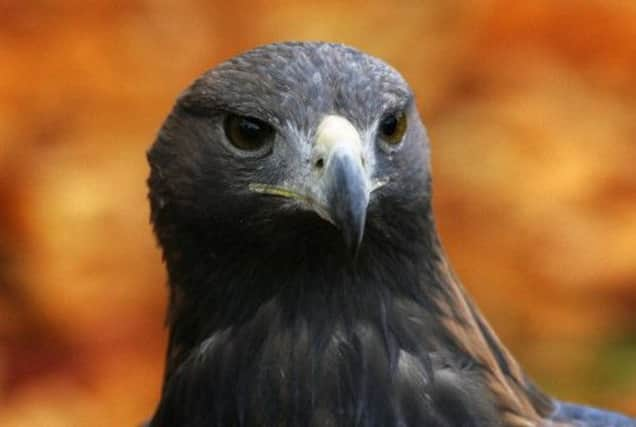Young eagles lay eggs for first time in Scotland


Normally, golden eagles only breed for the first time from four to six years old. Throughout Europe a three-year-old eagle has been confirmed to lay eggs only once before in southeast Spain.
The early breeding success of two young female eagles in Scotland was discovered through a satellite tagging project run by the Highland Foundation for Wildlife, Scottish Natural Heritage (SNH), Natural Research and the RSPB.
Advertisement
Hide AdAdvertisement
Hide AdA spokesman for RSPB Scotland explained: “Two satellite transmitters were attached to young golden eagles in Galloway and Strathspey in July 2010. Two young females laid eggs this year, at just three years old, having mated with older males in the Scottish Borders and Aberdeenshire.”
Roy Dennis, Director of the Highland Foundation for Wildlife, said: “This is very exciting, as it is the first proof in Scotland that golden eagles can breed at three years. It shows that when they live in areas with plenty of food and little competition, golden eagles can breed at three years old. Unfortunately, the eggs did not hatch but that is not surprising for such young individuals.”
Professor Des Thompson of SNH, who chairs the group running the work, said: “Both areas where these young Scottish golden eagles have bred were previously identified as having several unoccupied territories. Previous research has pointed to a link between persecution and younger golden eagles managing to secure territories and attempting to breed.”
He added: “The shortage of older females may explain why such young birds have managed to breed. Provided the right conditions now prevail - persecution free, good availability of prey, good weather, and appropriate habitat - then we hope that these birds will attempt to nest again next year and young will fledge. This would signal the start of an upturn of the fortune of golden eagles in these areas.”
The golden eagle is the UK’s second largest bird of prey and has a wing span of around two metres. Immature eagles are readily distinguished from older birds as they have more white areas on the central wing and inner tail.